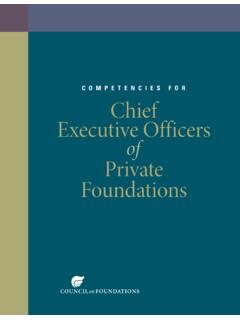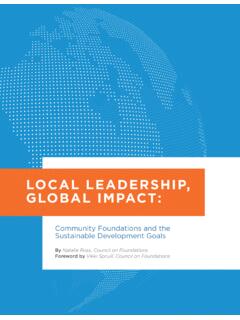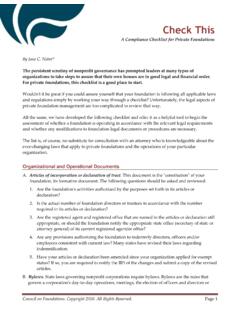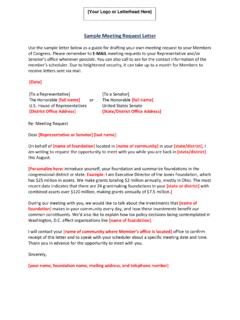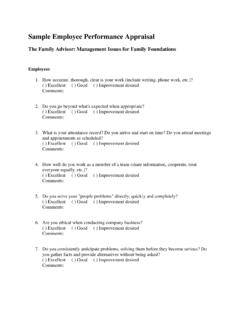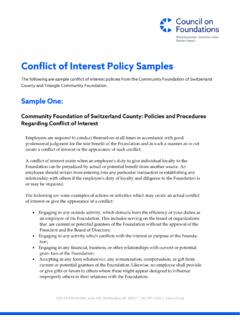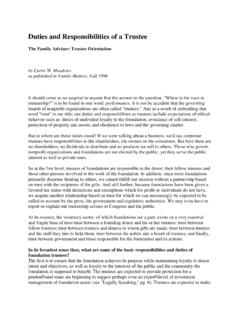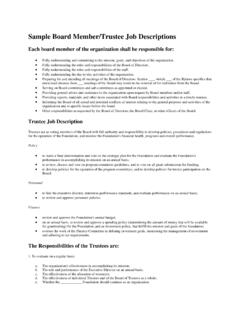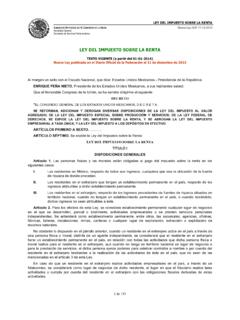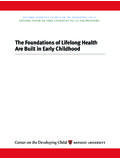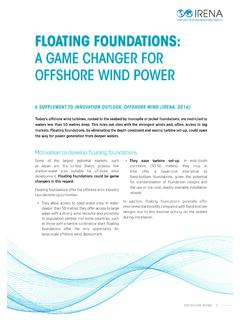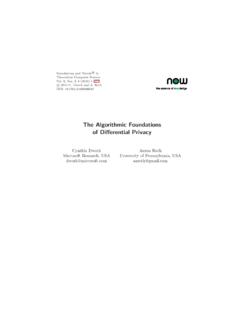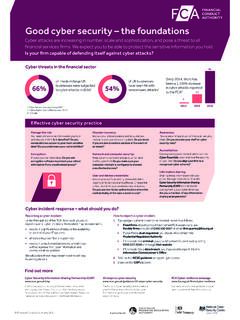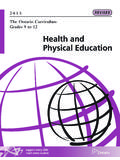Transcription of Disaster and Recovery Plan - Council on Foundations
1 Disaster Preparedness and Recovery Plan Version Sponsored by: Community Foundation Leadership Team (CFLT) Fiscal and Administrative Officers Group (FAOG) Program Network (ProNet) Page 2 CONTENTS Overview .. 3 risks and Event Scenarios .. 3 Plan 4 Responsibility and Delegation of Authority .. 4 Incident Response Team (IRT) .. 5 Incident Response Team Roles & Responsibilities .. 6 Business Impact Analysis .. 8 Recovery Activity Summary & Needs 10 Recovery Activity Summary and Needs Assessment .. 12 Vital Records .. 14 Disaster Notification/Communications .. 15 Personnel & Board Contact Information .. 16 Building 17 Emergency Operations Center .. 17 Business Recovery Locations .. 18 Information Technology/Operations Preparedness .. 19 Emergency Grant Making Procedures .. 22 APPENDIX A Risk Assessment .. 24 APPENDIX B-1 First Person On Site Checklist .. 26 APPENDIX B-2 Incident Commander (IC) Checklist .. 28 APPENDIX B-3 Finance Coordination Checklist.
2 30 APPENDIX B-4 Administration Coordination Checklist .. 32 APPENDIX B-5 IT and Telecom Coordination Checklist .. 33 APPENDIX Sample Hardware .. 33 APPENDIX Minimum Hardware Requirements .. 33 APPENDIX Hardware Recovery Order .. 33 APPENDIX B-5 TableTop Simulation Suggestions .. 33 APPENDIX B-6 Human Resources Coordination Checklist .. 37 APPENDIX B-7 Public Relations & Communications Coordination Checklist .. 40 APPENDIX B-8 Program Coordination 40 APPENDIX C List of Key Service Providers .. 41 APPENDIX D Vital Records .. 43 APPENDIX E Communications Information .. 45 APPENDIX F-1 Pre-Evacuation Checklist .. 50 APPENDIX F-2 Functional Area Checklist .. 51 APPENDIX F-3 Building Emergency Procedures .. 52 APPENDIX F-4 Evacuation Community Resources .. 54 APPENDIX F-5 Pre-Evacuation Report .. 55 APPENDIX G Mutual Aid Agreement .. 56 APPENDIX H Emergency Personnel Policies .. 56 GLOSSARY .. 59 Page 3 Overview Community Foundations have proven themselves to be cornerstones of support to the community, especially in times of need and Disaster .
3 When emergencies or disasters strike, the Foundation must be well-prepared to quickly and effectively help itself in order to be able to help others. This plan outlines the organization s strategy for responding to emergency or Disaster , provides information essential to continuity of critical business functions, and identifies the resources needed to: ensure safety of personnel communicate effectively with internal and external stakeholders provide timely emergency support and grant making service to the community protect assets and vital records (electronic data and hardcopy) maintain continuity of mission-critical services and support operations The first step in developing your plan is to define the goals of the plan. For example: 1. Protect life and health 2. Protect business assets 3. Protect organizational reputation Please note that no two emergencies are identical. Therefore, no single plan of action can anticipate and address every possible circumstance.
4 The instructions contained in this plan are intended to serve as guidelines only. They may not be appropriate in all cases. At no time should you risk your personal safety in complying with any of its provisions. risks and Event Scenarios Disasters are events that exceed the response capabilities of a community and/or the organizations that exist within it. risks to be considered include those from natural hazards, neighbors, building environment, political or social unrest and risks connected to IT and data security. This Foundation is primarily at risk to disasters caused by: <Insert your Foundation s risks here. See Appendix A for examples.> These events may impact business operations of the Foundation on several Levels: 1 1-2 Day Business Disruption An emergency or Disaster that exceeds the capabilities and capacities of a city and/or county government response but has a short duration such as a service outage, building outage, major fire, or site utility failure.
5 May affect a large number of people for a short amount of time. All operations resume on-site in < 48 hrs. 2 1 - 2 Week Business Disruption A crisis moderate to severe in scope. A foundation may have partial access to facility Page 4 and/or primary IT systems. Examples include service loss, building access loss or local utility failure. May also include a regional event such as terrorism, contagious diseases or weather-related Disaster . Some business operations moved off-site. Small-scale work-from-home/alternate site and remote access. All operations resume on-site in < 14 days. 3 > 2 Week Business Disruption A Disaster including a complete loss of facility and/or primary IT systems. Regional utility failure. All critical business operations moved off-site. Large-scale work-from-home/alternate site and remote access. All operations resume on-site in < 30 days or a new site is required. During a Disaster or emergency, the Foundation must maintain normal operations required to address time-sensitive, Disaster -specific issues.
6 No plan can anticipate or include procedures to address all the human, operational and regulatory issues raised during a Disaster or emergency. This plan addresses issues required for continuation of essential business functions, such as needs assessment, communication, volunteer outreach and coordination, grant making and community assistance under rapidly changing circumstances. Plan Activation The Foundation CEO, an appointee, or successor may activate this Plan when it is necessary to manage and coordinate a Disaster response. The decision to activate will be made in consultation with members on the Incident Response Team. Responsibility and Delegation of Authority The individuals included in the list below will be responsible for the tasks listed. A checklist for each person is attached to this document in Appendix B-2 to B-8. To complete this chart, you should determine the person(s) best suited to handle various aspects of an emergency or Disaster .
7 As part of the list, you will need to review your banking authorizations signature cards, authorizations to raise and/or transfer cash, etc. <If the appropriate people on this list can not sign checks or transfer funds, your plan will not operate as intended.> If the first person listed in each role below is not available, then the second person and so on will take primary responsibility. Page 5 Incident Response Team (IRT) Role in Disaster Name Title Responsibilities Contact Information Incident Commander 1. See Appendix B-2 (See chart page 16) - Person who will lead. 2. 3. Finance Coordinator 1. See Appendix B-3 - Person who will secure resources. 2. 3 Administration Coordinator 1. See Appendix B-4 - Person who will plan for resources. 2. 3 Information Technology Coordinator 1. See Appendix B-5 2. 3 Human Resources Coordinator 1. See Appendix B-6 2. 3 Public Relations & Communications Coordinator 1.
8 See Appendix B-7 2. 3. Programs/Grants Coordinator 1. See Appendix B-8 2. 3. IMPORTANT: For the FIRST PERSON ON SCENE WHO IS IN CHARGE, no matter what role in Disaster , see Appendix B-1 for Checklist. If a designated individual is unavailable, authority will pass to the next individual on the list. Unavailable is defined as: The designated person is incapable of carrying out the assigned duties by reason of death, disability, or distance from/response time to the facility. The designated person is unable to be contacted within an appropriate time period for the emergency or Disaster . In a High Level Disaster (see definitions on pages 8 and 9), this time period is defined one hour. If the person cannot be contacted within an hour, the second person should be contacted. In a Medium Level crisis, this time period is defined as four hours. In a Low Level emergency, this time period is defined as more than eight hours. The designated person has already been assigned to other emergency activities.
9 <INSERT EMPLOYEE NAME> is required to update the succession list above as well as the contact information in the Personnel & Board Contact Information Chart (page 16) as changes occur. Page 6 Incident Response Team Roles & Responsibilities Board of Directors Be available for emergency meetings, conference calls, approvals, etc. CEO/Executive Director usually the Incident Commander IC Declare Disaster to activate plan and command center. Manage the overall response. Establish appropriate staffing for the Recovery and monitor effectiveness. Exercise overall responsibility for coordination between Emergency Operations Center (EOC) and Program Officers in the field. Act as The Foundation s public face to the community. Move Foundation toward stated Recovery objectives. Administration Ensure that the Foundation s offices are returned to normal operations as quickly as possible. Assist in the development of an alternate site as necessary. Assist staff with any aspect of travel including transportation and lodging.
10 Oversee the investigation of property and equipment damage claims arising out of the event. Notify insurers and third party administrators as needed. Coordinate paperwork required by insurers to initiate claims process. IT/Telecom Recover computer and telephone technology (hardware and software). Fund Development Advise existing and new donors about donations. Provide customer service to existing, potential, and new donors. Program Department Supervise the Foundation's community response. Review community communications. Approve grants and loans to nonprofits in the affected areas. Liaise with other Foundations and appropriate city and county offices. Human Resources Is responsible for the human aspects of the Disaster including post-event counseling and next-of-kin notification; answer questions related to compensation and benefits. Provide current roster of personnel. Provide emergency contact information for notification of next-of-kin. Track, record, and report all on-duty time for personnel working during the event.
